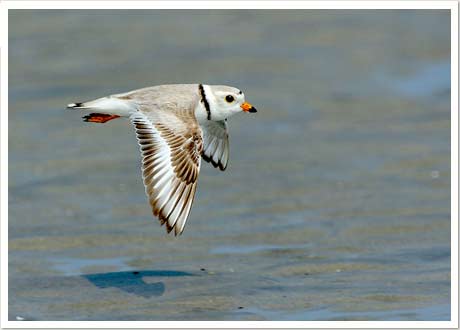|
 |
 |
 |
 |
| Sandy beaches are dynamic systems, constantly reshaped by shifting sands from wind, ocean waves and currents. Shorebirds that breed in this habitat lay their eggs in shallow scrapes in the sand, and forage for food in beach wrack. During winter months, sandy beaches frequently become cobble shores. |
 |
 |
|
 |
 |
|
|
 |
 |
 |
 |
 |
 |
 |
|
| Piping Plover |
PHOTO: 1 2 3 4 |
 |
|
 |
 |
| Piping Plovers breed on Plymouth Beach from April until August. During the breeding season, you are likely to see pairs of Piping Plovers every few hundred feet along the front beach. They lay their eggs directly on the sand, and the chicks are capable of walking within hours after hatching. By mid August, flocks of up to 20 may be seen feeding on invertebrates and resting on the high beach. Most Piping Plovers leave the beach by mid-September on southbound migrations. |
|
|
|
|
|
|